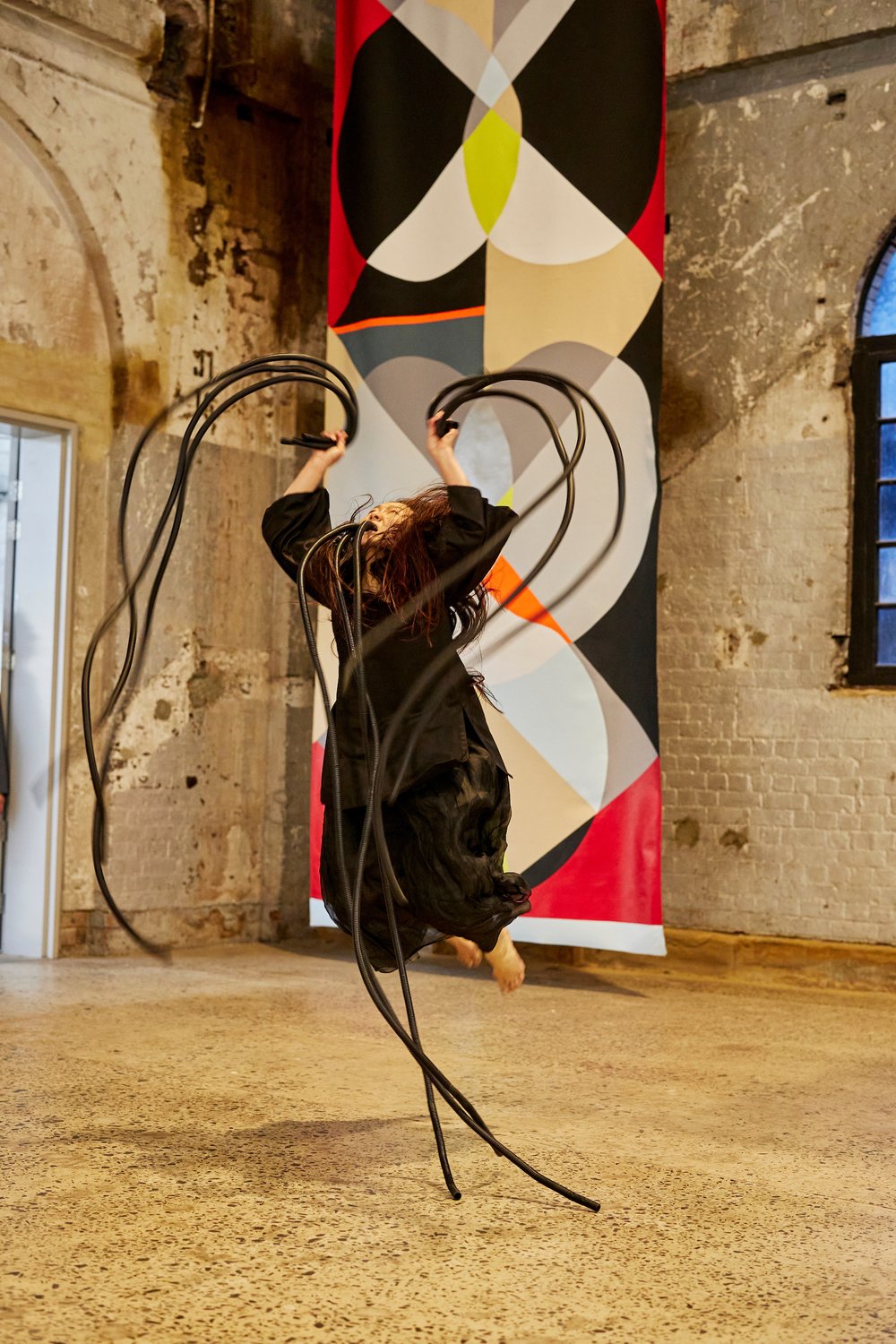t h e s u b t l e b e i n g s
Articulate project space 2016-2018
t h e s u b t l e b e i n g s is a performance installation that is the result of WeiZen’s two years of travel in Asia to research and witness of rituals in Sabah (East Malaysia) and Hanoi (Vietnam), rituals that are connected to her own geographical and socio-cultural lineage.
The work uses hair, text, sound, mirror film, sound circuitry, movement, vocals and video.
My collaborators are Katja Handt (costume designer), Iqbal Barkat (associate director - film, dramaturgy, installation), Vincent Tay (lighting & event cinematography), Binh Ta (cultural guide and associate artist in Hanoi), Damian Castaldi (kinetic sound circuitry design & installation), Michael Tosuito (sound design collaborator & engineer), Sarah Keighery, William Seeto, Louise Morgan, Alexandra Mitchell, Naomi Ullmann, Alan Schacher (installation team), Oliver Damian (performance ritual helper), Alan Schacher (choreographic consultant).
The project was made possible by Australia Council for the Arts to study and develop ‘Performances, Interpreted & Reimagined of Asian Animistic & Shamanistic Rituals’ from 2016 to 2018.
“I am interested in the performance of ritual-like experiences of being possessed as a transformative experience for both the performer and onlooker. Then there is the notion of possession as the filling in of, and mediating of, many kinds of absences. It makes me wonder about the kinds of qualitative states that may make possession possible: mental vulnerability, uncertainty of social identity, lack of access to deeper communion or devotional spaces (and I don’t mean just religious institutional buildings), the thinning veil between life and death, the need for empowerment, unbelonging, dislocation, displacement and uprooting.
Coming from a lineage of Fujian people who migrated into Malaysia and Indonesia before the Cultural Revolution in China, the above-mentioned states are familiar. I suspect the migration process can exacerbate them, depending on the level of trauma and degree of choice involved. Migrants have to grapple with the cultural distance they have travelled from as well. I guess for some, a migrant’s world can be akin to a state of perpetual purgatory…
Possession can possibly be an instrument against despair and humiliation, where perhaps even a person dispossessed of country of origin, who is part of an invisible class in society or whose sense of identity is porous, can experience a sense of spiritual authority and communion, for example.
Part of my practice is the continual search for a performance structure that has integrity and yet is so minimal that it allows sixty to seventy percent space for improvisation and thereby hopefully, mediumship to occur. By mediumship I mean heightening my sensitivity to the guts of the performance, body imageries I am working on, and the presence of the space I am inhabiting..."
WeiZen Ho, Potus Sedere: Part of the Stories from the Body Performance Series; Rabbit 20 - Dance (A Journal for Non-fiction Poetry) published by RMIT in 2017
Research process information:
http://www.weizenho.com/performance-installationinprogress/
http://articulate497.blogspot.com.au/p/comin-weizen-ho.html
I also acknowledge :
Osewan bin Ayung and Mary binti Mojihit; Datuk Jeffry bin Ayah @ Datuk Cobra and Datin Inulian @ Eliani binti Atajau, Kampung Minyak, Sabah.
Oduzan bin Musu and Iyaang in ‘House of Gongs’, Kampung Pituru, Sabah.
Susan Bansin, whose family are from Penampang 'Proper'.
The Lendong ritual dancers in Nam Dinh and Hanoi, including Minh Do Hoàng
Dr Ngoc Mai Nguyen (anthropologist in Hanoi)
Slideshow of t h e s u b t l e b e i n g s March 2018
All images are taken by Vsevolod Vlaskine and Alan Schacher unless stated otherwise.
This project has been assisted by the Australian Government through the Australia Council, its arts funding and advisory body

